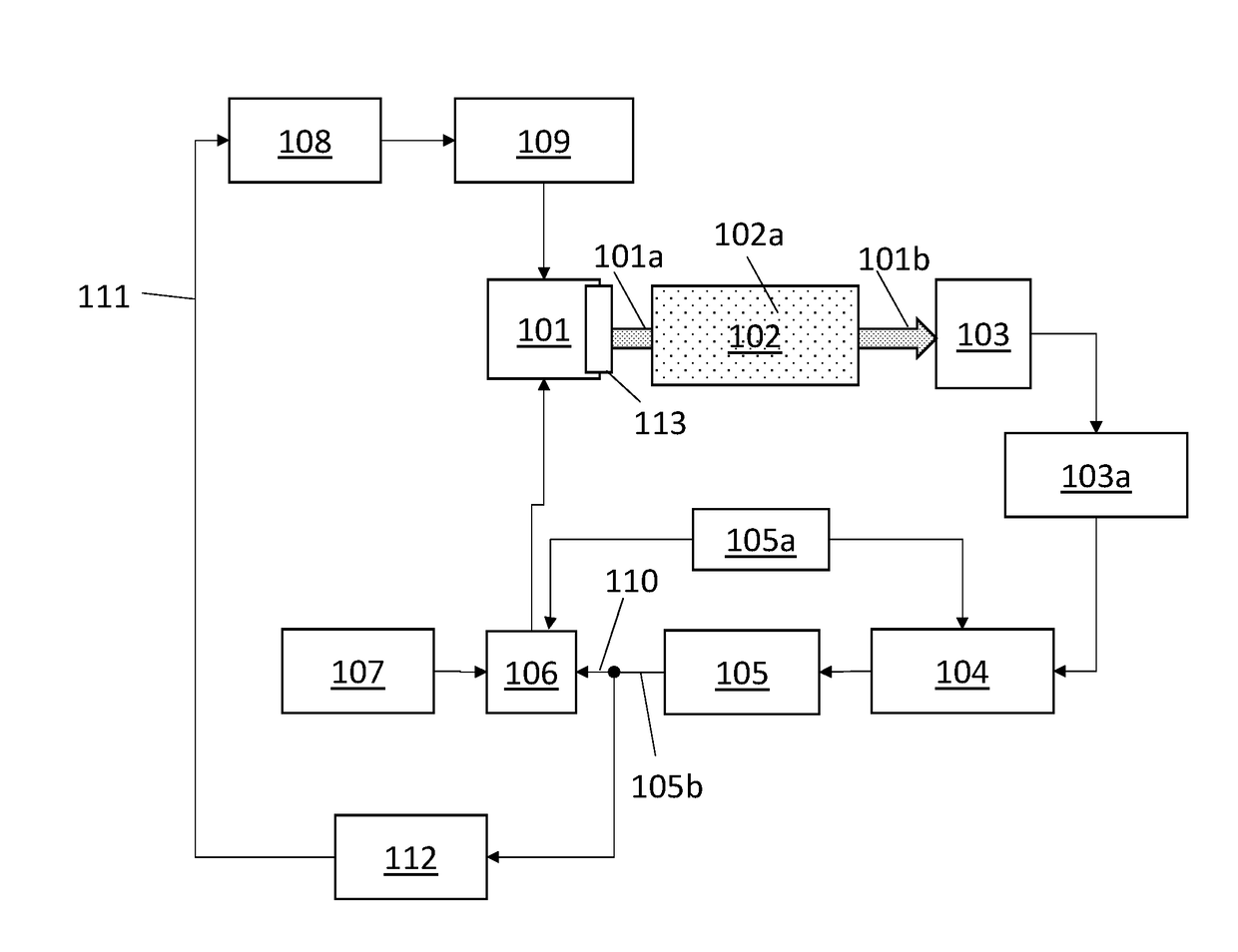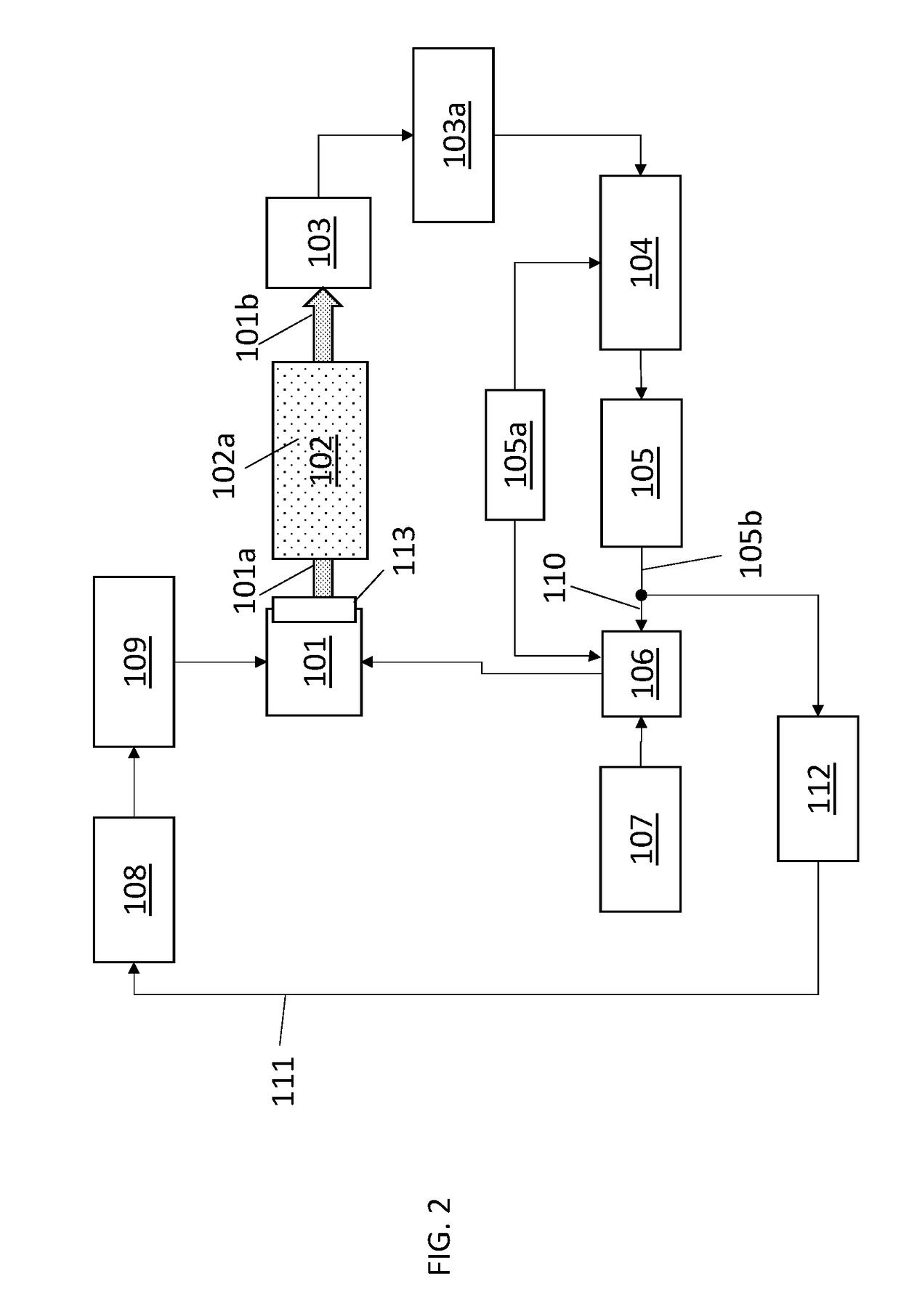Method for Stabilizing Atomic Devices
a technology of atomic devices and stabilization methods, which is applied in the direction of laser details, laser output parameters control, semiconductor lasers, etc., can solve the problems of insufficient laser output power, limited tuning range available, and change the output power of lasers, etc., to achieve high dynamic range, high bandwidth, and high bandwidth
- Summary
- Abstract
- Description
- Claims
- Application Information
AI Technical Summary
Benefits of technology
Problems solved by technology
Method used
Image
Examples
example 1
[0033]As an example, a rubidium optically-pumped atomic (OPA) device has been constructed. A schematic diagram of the OPA device is shown in FIG. 4. For purposes of illustration, the top box 301 encloses the sensor optical components. The bottom box 302 encloses modulator 120a, the PID servo controller 120 and a second PID servo controller 160. A laser diode 10, such as a vertical cavity surface emitting laser, was mounted on a baseplate with a small resistive electrical heater 180 placed in close proximity to the laser diode 10. The light beam 20 was collimated by an optical lens 30, and the polarization of the light was adjusted for optimal performance of the OPA device with a waveplate 50. The intensity of the was also adjusted for optimal performance of the OPA device with an absorptive filter 40. The laser light was directed towards a sealed, transparent glass vessel or vapor cell 70 containing a vapor of rubidium metal 60. The rubidium vapor cell 70 was placed inside an oven 7...
example 2
[0038]The above example described how the present invention was used as a laser wavelength reference for atomic devices. In this embodiment, the system stabilizes the laser wavelength to an optical cavity instead of an atomic vapor. These systems often require a fast feedback loop, since the cavity has a very narrow linewidth and larger drift compared to many atomic resonances. However, several lasers can be used, such as but not limited to Fabry-Perot lasers, vertical-cavity surface-emitting lasers, distributed feedback lasers, and distributed Bragg reflector lasers.
[0039]When the laser is frequency-locked to the side of a cavity fringe, the actual output frequency can change when the laser power fluctuates and therefore it is important to keep the laser power constant as well. For example, a Fabry-Perot laser may be locked to the side of a cavity fringe. The laser frequency can be tuned fast over small discursions with the laser injection current and slowly over a wide range of fr...
example 3
[0041]The above described system and method may be used to stabilize a magnetic field in space using electromagnetic coils with high bandwidth as well as with a large dynamic range. The dynamic range refers to the maximum magnitude of the field that the electromagnetic coil system can generate, and bandwidth relates to the maximum rate at which the electromagnetic coils can respond. A magnetic sensor may be used to measure the original magnetic field in the region of interest. If the original field is high or low compared to a desired value, the electromagnetic coils can be energized appropriately to adjust the field value to the desired level. Thus, an electronic feedback loop can be established using the magnetic sensor and electromagnetic coil system to lock the magnetic field to a desired value in a region around the sensor.
[0042]To achieve a large dynamic range, an electromagnetic coil with a large number of turns can be utilized. However, coils with large number of turns have ...
PUM
 Login to View More
Login to View More Abstract
Description
Claims
Application Information
 Login to View More
Login to View More - R&D
- Intellectual Property
- Life Sciences
- Materials
- Tech Scout
- Unparalleled Data Quality
- Higher Quality Content
- 60% Fewer Hallucinations
Browse by: Latest US Patents, China's latest patents, Technical Efficacy Thesaurus, Application Domain, Technology Topic, Popular Technical Reports.
© 2025 PatSnap. All rights reserved.Legal|Privacy policy|Modern Slavery Act Transparency Statement|Sitemap|About US| Contact US: help@patsnap.com



